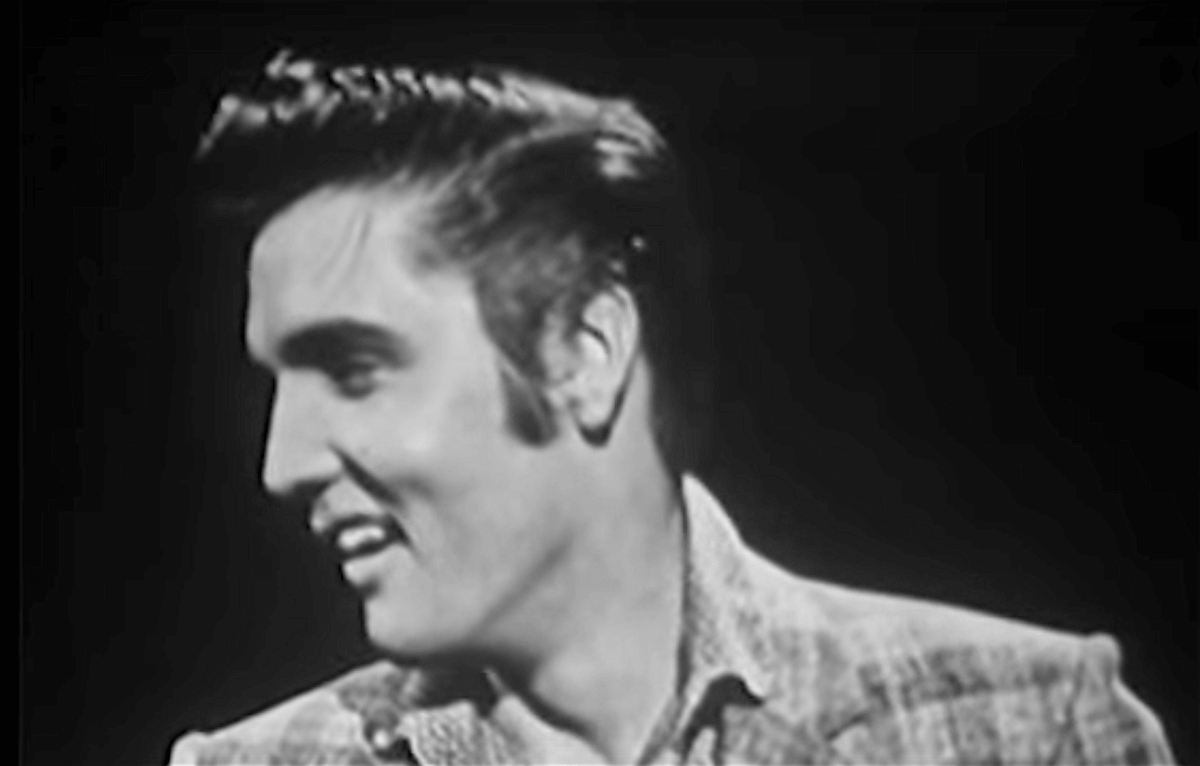Elvis on 'Ed Sullivan': What Really Happened
Decades after The King's appearance, memory is a funny thing
It’s funny how memory sometimes overwrites history. Many remember the story like this: On Sept. 9, 1956, a young Elvis Presley appeared on The Ed Sullivan Show. He gyrated his hips in a way that scandalized Eisenhower-era audiences — with the exception of teen girls, who merely screamed and cried, overcome.

Boom. Rock and roll history was made on that stage in front of 60 million TV viewers.
Trouble is, only some of this is true.
Presley did appear for the first time on The Ed Sullivan Show that day, performing Don’t Be Cruel and Love Me Tender. But while most people remember Sullivan promising a “really big shew” with Presley that evening, Sullivan himself actually was not even present the night of Presley’s debut. He had been injured in a car accident nearly a month earlier and was replaced that evening by Charles Laughton.
And remember how Sullivan wouldn’t film Presley from the waist down to protect the viewing audience’s eyes and minds? In actuality, Sullivan’s audience didn’t witness that until Presley's Jan. 6, 1957 performance — his third and final on the show — when he appeared without a guitar and rollicked through Hound Dog with his band.
Not only were Sullivan and the gyrations missing during that first appearance, Presley himself was not even there. He performed in Los Angeles at CBS’s studio and was merely telecast to the audience in New York.
The performance was tame in comparison to his TV debut on The Milton Berle Show the previous June, which generated critical and cultural outcry for his dancing. An even earlier appearance on The Steve Allen Show, had Elvis performing in a tux with tails singing, ludicrously and unenthusiastically, to a basset hound.
Media and Memory of The King
So, why do we remember this all so differently?
Well, for one thing, we don’t have hundreds of clips uploaded to YouTube and millions of web pages to remind us of the history, says Gilbert Rodman, author of Elvis After Elvis: A Posthumous Career of a Living Legend. Although Presley’s earlier TV performances “killed Sullivan in the ratings,” he says, most casual fans remember primarily Sullivan. We rely on accounts from the few major TV networks and other traditional media (radio, newspapers and magazines) of the time, along with fan memories to craft a "historical" record.
“As we get further and further away from the moment, we need stories to remember to tell. We’re dealing with a moment in history where unlike now, we don’t have the Internet to help us remember,” Rodman says. “In the 1950s, it was so much easier for a dominant cultural narrative to be framed and carried by a small handful of voices.”
Controversy also tends to trigger stronger memories, he notes.
“Sullivan’s first two shows with Elvis sort of drop out of the dominant cultural narrative because our memory is that he goes on Sullivan and he’s so controversial that Sullivan refused to film him from the waist down,“ he says. “I also think that the last appearance on the Sullivan show is what people actually remember, because it was his last TV performance before he went to the Army in 1958.”
Remembering Elvis Presley on TV: Revolutionary or Teen Idol?
Rock history was made as we look back on that evening — but as it often goes with history, the gravity of the moment wasn’t recognized until much later. In fact, rock and TV critics alike gave mostly scathing reviews to The King and his performances of that era.
Almost all of the critiques focused on the teen girls who would scream at his concerts instead of the music. (For the record, the African-American press in the 1950s rarely noted the screaming girls but often discussed Presley’s co-opting of blues artists, so the critique wasn’t universal.)
In my book, From the Dance Hall to Facebook: Teen Girls, Mass Media and Moral Panic in the United States, I analyzed media coverage of Elvis’s female fans, and it’s clear they are represented as victims of his sexuality who happen to have poor taste in music and out-of-control libidos.
Certainly, few journalists at the time could imagine we’d be commemorating the moment as a historical television and a rock milestone decades later.
But for his fans, the memories are all about the music — not the screaming or a worry that Presley was corrupting them.
Pat Strodt of Roseville, Minn., who was 14 at the time of Presley’s performances on Ed Sullivan, said in an interview for my book that even in her own home, she “carried on” for the musician, much to the embarrassment of her sister (though her “liberal” parents seemed more amused than anything). Still, she was surprised by the panicked media accounts and amazed that the media often still latch on to the teens girls’ reactions to Elvis.
“I didn’t know what the big deal was at all; it seemed so ridiculous,” she remembered. “It’s not like he was doing something pornographic or really even suggestive. He was dancing.”
Here's the video of that first Ed Sullivan performance. What do you think?

